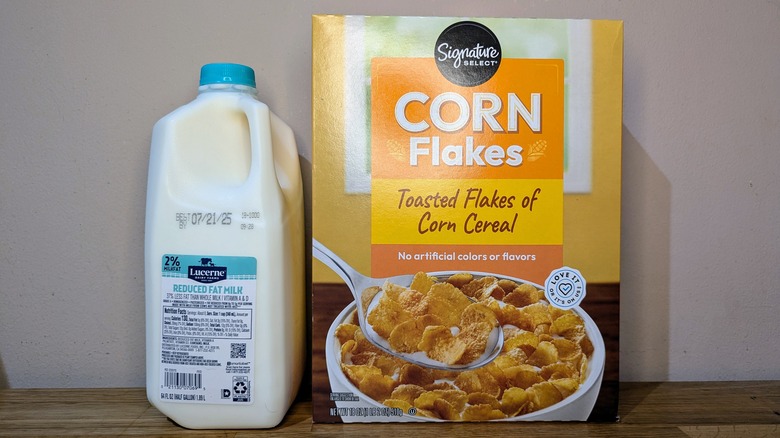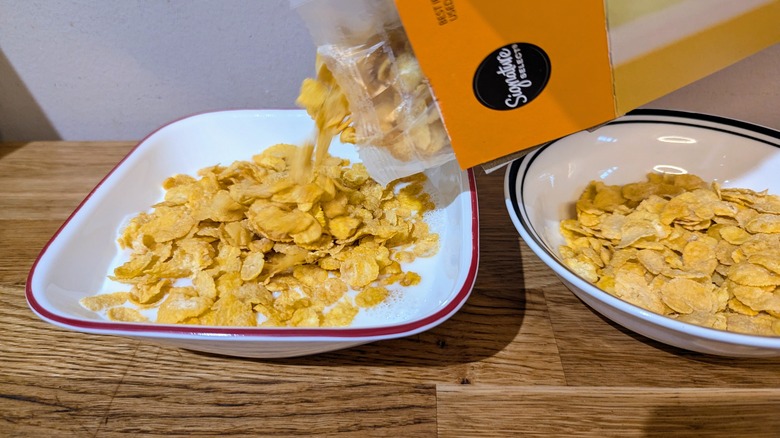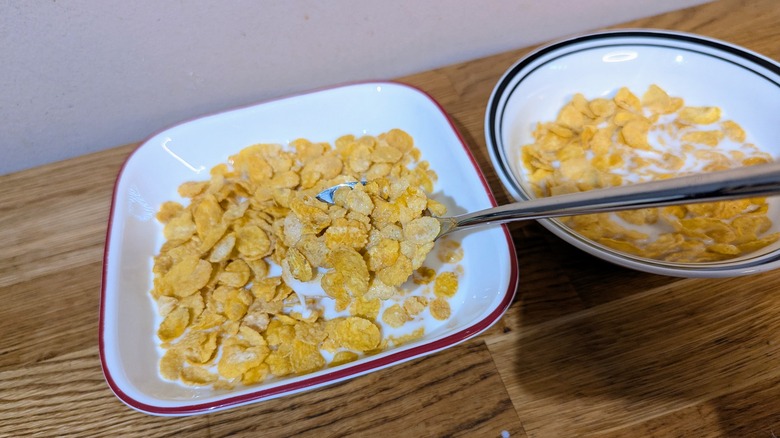Does Pouring Milk Before Cereal Actually Keep Cereal Crispier?
In all of history, mankind has pondered many important questions, such as when the universe was created, and what came first, the chicken or the egg? But today, I am tackling one of the world's most pressing issues: How the heck do you prevent cereal from getting soggy in milk so quickly? I've heard a rumor that there's one trick you can employ to prevent this from happening, but it seems out of order. The trick is to pour the milk into the bowl before you pour cereal into it.
When you think about it, aside from covering each flake in a thin layer of paraffin wax (or perhaps deep frying it), there really isn't much you can do to change the method in which you serve cereal. Would this small adjustment really be what does the trick? In order to figure this out, I decided to run an informal experiment to see if there was a perceptible change in crunchiness.
I did a side-by-side timed comparison of two bowls of cereal, one with the milk poured into the bowl first, the other with the cereal down first (with the milk then poured in, aka the regular way). I decided to use corn flakes since I was hard-pressed to think of another cereal that I associated with both crunch and sogginess at the same time. As much as I love being regular, I'll skip the Fiber One, thanks.
It takes mere minutes for cereal to start getting soggy
I poured corn flakes into one empty bowl (pictured on the right), then poured cereal into a bowl filled partway with milk (the one on the left). Then I poured milk into the dry bowl and started the timer. After one minute, both bowls of cereal were still crisp. The two minute mark is where the cereal started changing slightly. Flakes from both bowls started softening a touch. At the three minute mark, the crispness of the cereals started diverging. The cereal in the bowl with the milk traditionally poured into it was a little more soggy than the one on the left, whose flakes were sort of a blend of both soggy and crisp.
That's because a portion of the cereal poured into the milk had remained above the liquid level, and as I scooped the cereal beneath it to sample along, the dry flakes slowly sank down into the milk, buying those some extra time to stay crisp. That natural pyramid shape which had formed when I poured the dry cereal on top of the milk had indeed made a bit of a difference.
In the end, however, it's all sort of a wash
I repeated the experiment a second time, which pretty much reflected the same results as the first iteration. The four to five minute mark was where the cereal was officially soggy in both bowls, with just a few stray flakes staying crisp in the bowl on the left. But when the majority of each spoonful is soggy with just a few crispy flakes in it, the whole bowl ends up mentally registering as soggy.
Also, let's be real. It's cereal. Nobody ever lingers over a bowl of cereal. It's almost always scarfed down in a hurry. Five minutes might as well be two centuries in cereal years. If you're a slow eater and prefer your cereal to stay crisp, your best bet is to really just pour small amounts of it to begin with. Then, if you want more of the crispy stuff, simply pour yourself another serving. Alternatively, just go easy on the milk.
This is one of those cases where there is a slight difference based off of order of operations, but the end result doesn't change much at all. If you don't believe me, you can try it yourself one morning. If you're not in a rush to slam that bowl before heading out the door, that is. Oh, and if you're one of those people who prefer your cereal dry, you're not alone — some Takeout writers won't even put milk on their cereal. Hey, I'm not one to judge. Live your life to the fullest.


